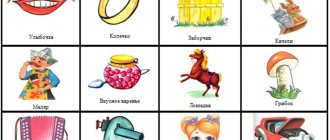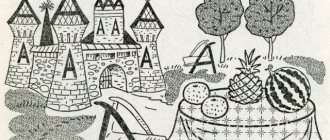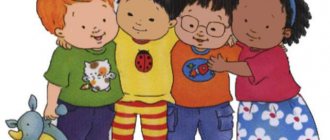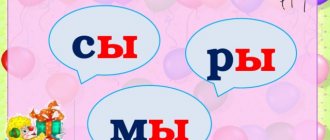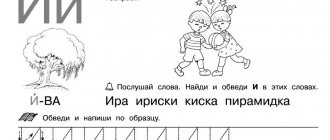Introducing Consonants
Teaching preschool children literacy using the method of L.E. Zhurova
Lidia Efremovna Zhurova is a famous psychologist, an authoritative scientist in the field of preschool and primary education, and is the author of pedagogical diagnostics of children’s readiness to study at school and the success of learning in primary school, which allows the teacher to identify the intellectual and personal characteristics of each student. This is especially important in the context of the transition to Federal State Educational Standards.
Lidia Efremovna is the author of the “ABC for preschoolers” courses in the educational and methodological set “Pre-school time”, the integrated “Literacy” course (now the “Primer” textbooks) in the “Primary School of the 21st Century” textbook system.
The system proposed by the author for teaching reading to children of preschool and primary school age contributes to a more effective formation of reading skills. Using Lidia Efremovna's textbooks, learning to read is an exciting game activity. For teachers and parents, these benefits help increase children's interest in reading and make the learning process less tedious and monotonous.
When teaching both writing and reading, the initial process is sound analysis of oral speech , that is, the mental division of a word into its constituent sounds , establishing their quantity and sequence.
Teaching the sound analysis of a word is the main task of the preparation stage for learning read and write and involves:
determining the number of sounds in a word ;
phonetic characteristics of sounds (the ability to differentiate vowels and consonants , voiced and voiceless, hard and soft);
determining the place of a sound in a word .
Senior group
Teaching children the sound analysis of words begins with determining the sequence of sounds in it. It is necessary to identify a sequence of sounds by repeatedly pronouncing a word with sequential intonation highlighting of each sound. When analyzing the word beetle, the child must pronounce it three times: zhzhuk, zhuuuk, zhuK.
Children cannot master phonics by just saying words out loud. It is necessary to show them the word in detail, presenting its sound structure in the form of a model.
A picture-diagram of its sound composition makes it possible to really imagine a word. On it is placed a drawing-object, the name of which the child must make out, and a number of cells under the drawing, which are sequentially filled with chips.
The word model resulting from sound analysis reflects individual sounds and their sequence. When conducting a sound analysis, the child points the pointer under the diagram and, in accordance with the movement of the pointer, pronounces a word with sequential sounds, designating each of them with a chip.
Introducing vowel sounds
After children have mastered the skills of conducting sound analysis of the simplest words (poppy, whale, house, smoke, forest, onion), they are introduced to vowel sounds. Children learn that sounds during the formation of which air passes freely, nothing “interferes” with these sounds - neither teeth, nor lips, nor tongue - are called vowels. Children find such sounds in previously analyzed words: poppy [a], bow-[u], house-[o], forest-[e], whale-[i], smoke-[s]. Children “test” all the sounds as they pronounce them and see if anything in their mouth interferes with their pronunciation.
Vowel sounds are denoted by a red chip.
Models of words with three sounds
Models of words with four sounds
Introducing the stressed vowel sound
After children learn to distinguish between vowels, hard and soft consonants, it is necessary to introduce them to stress, teach them to identify a stressed syllable and a stressed vowel sound in a word. It is better to start learning how to isolate a stressed syllable with two-syllable words with stress on the first syllable (bear, porridge), then move on to words with stress on the second syllable. Teaching the ability to isolate word stress is included in the work of conducting sound analysis. Following the stressed syllable, children are introduced to the stressed vowel sound. A black chip is used to indicate the stressed vowel sound.
Preparatory group
In the preparatory group for school the following tasks are solved:
- learn to analyze and synthesize sentences of different designs,
- get acquainted with all the letters of the Russian alphabet, learn some spelling rules, lay out words and sentences from the letters of the split alphabet using spelling rules,
- master the syllabic and continuous way of reading.
8.Rules for designating sounds with letters
One of the important tasks when conducting sound analysis of words is to familiarize children with vowel letters and the rules for writing them after hard or soft consonant sounds. Children must learn that the letters “a”, “o”, “u”, “s”, “e” are written after hard consonants, and the letters “i”, “e”, “e”, “yu”, “ and" - after soft consonants.
As children conduct sound analysis of words, they learn that the sounds “ch”, “sch”, “y” are soft consonants, they do not have a hard pair, and the sounds “zh”, “sh”, “ts” are hard consonants, not have a soft pair.
Familiarization with the rules for writing iotized vowels Ya, Yu, Yo, E at the beginning of a word, as well as in words like “lighthouse”, “army” is carried out during the sound analysis of specially selected words. Children learn that the letters Ya, Yo, Yu, E at the beginning of a word or after a vowel sound mean two sounds: YA, YO, YU, YE.
Analysis of the word YULA.
Introducing Consonants
Over the course of the year, the task of familiarizing children with all the consonant letters of the Russian alphabet is solved (in the process of working on the sound analysis of words). At the same time, the uniform principle of introducing each new consonant letter is strictly adhered to.
A consonant, with some exceptions, denotes two sounds: a hard and a soft consonant, so vocabulary material is selected taking into account what sounds the letters we enter can denote. For example, the letter M denotes the sound “m” in the word by, i.e. soft consonant, and the sound “m”, i.e. hard consonant; the letter N in the word Nina means the sounds “n” and “n”, etc.
When working with children, this principle is implemented as follows: for example, the teacher invites the children to write out the word Nina. They should denote vowels already familiar to children with the corresponding letters, and the sounds “n” and “n” with chips (green and blue), respectively. Then the children are asked to name the sounds indicated by the chips (“nn” and “n”). And here the teacher says that these sounds are denoted by one consonant letter - “n”.
After children already know several consonant letters (m, n, p, l, g, k, z, s, d, t, zh, w), they are introduced to the letter ь (soft sign ). For this purpose, it is proposed to lay out two words that differ from each other in one consonant sound, for example, the words chalk and mel, which differ in the sounds “l” and “l”. The children are sorting it out. After this, the teacher “introduces” the rule that in addition to the letters i, e, yu, ё, and, which indicate the softness of consonant sounds, there is also a letter - a soft sign (b), which does not indicate any sound, but is placed in order to show that the preceding consonant is soft.
The dividing function of a solid sign is revealed by comparing two words, for example, sat down and ate. Children learn the rule about a hard sign, which does not indicate a sound and is placed in order to separate the hard consonant sound from the letters e, e, ya, yu, the writing of which in another case indicates that the preceding consonant is read softly.
3. Reading training
When learning to read, there are three tasks:
teach inflection,
form syllable reading,
form a continuous reading.
The inflection stage is aimed at shaping the reading method. The child must first look at the vowel letter, then move his eyes to the consonant and read.
When reading syllables, the child must rebuild his reading skill: here the movement of the strip with vowel letters (the “Windows” manual) no longer forces him to look first at the vowel letter, he himself must guide his reading.
Stress helps to move from syllabic to continuous reading.
4. Game exercises aimed at developing phonemic hearing and speech attention in preschoolers
Exercises for children three years old:
"Bells"
Program content. To develop phonemic hearing, speech attention and articulatory apparatus of children.
Educator. The big bell (shows a big circle) rings: “Ding, ding, ding.” The little one (shows a small circle) rings: “Ding, ding, ding” (children repeat the sound combinations). When I show a big circle, big bells ring, when I show a small circle, small bells ring.
The teacher shows either large or small circles.
"Elephants and Donkeys"
Program content. Develop children's speech attention and articulatory apparatus.
The teacher divides the children into two groups: donkeys and elephants. They face each other.
Educator. The donkey (shows a picture) shouts: “Eeeee-eeee,” and the elephant (shows a picture) shouts “Yyyy-yyy” (children repeat the sound combinations).
At the command “Elephants are coming,” the first group of children moves around the room and makes the appropriate sounds.
On the command: “Elephants are coming,” the second group performs the above actions.
The game is repeated 3 times, then the children change roles and the game is repeated again.

